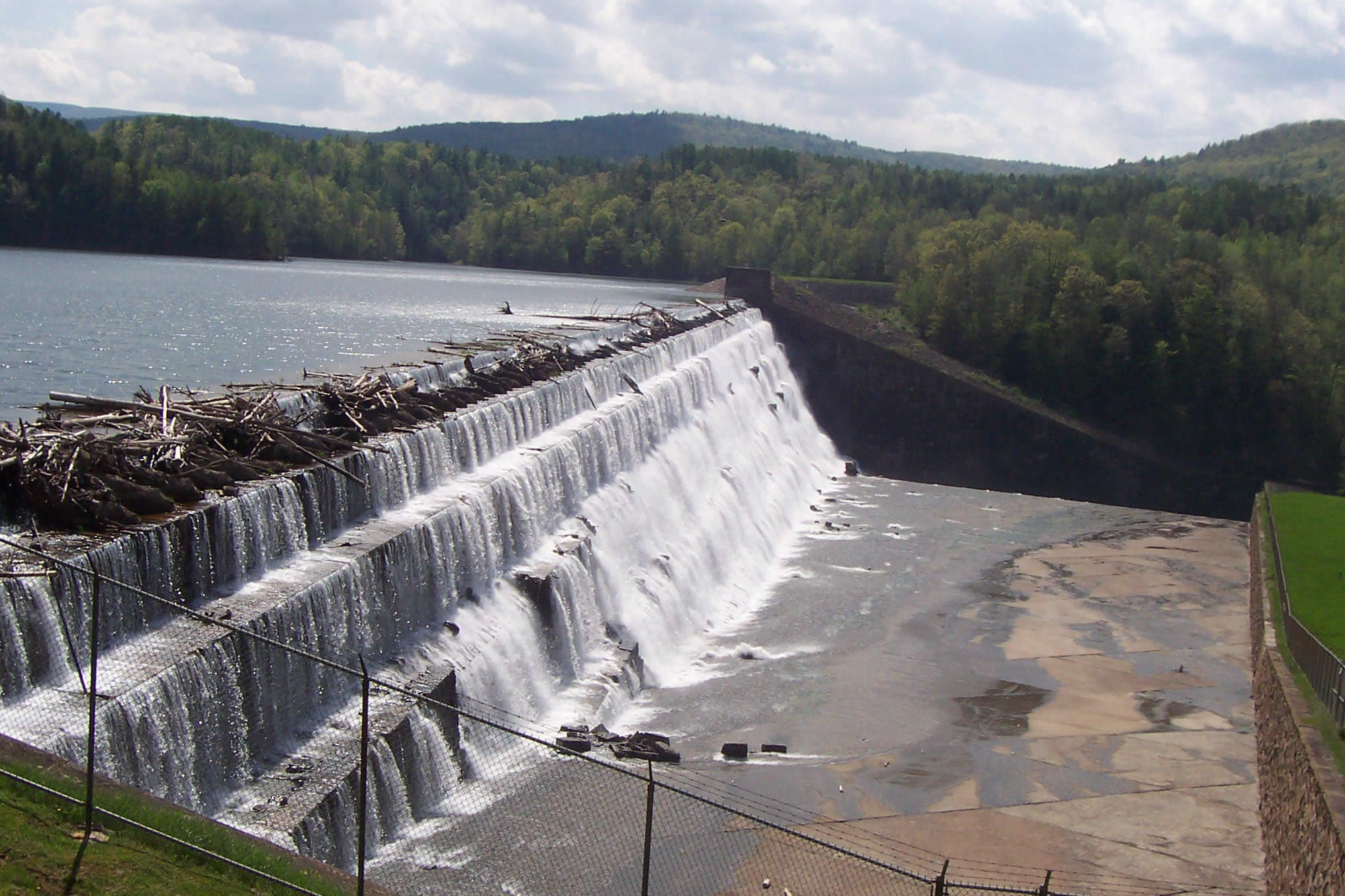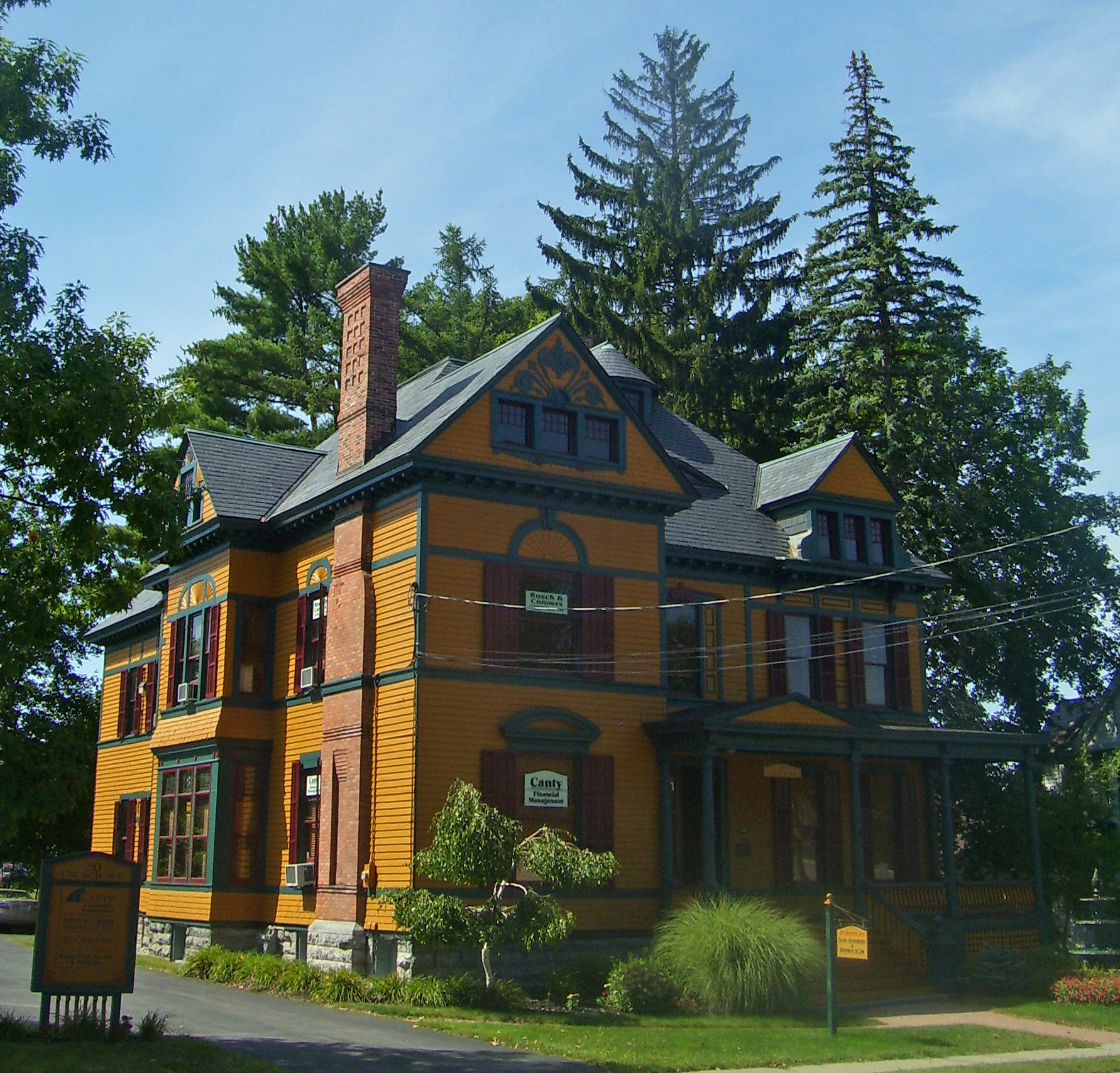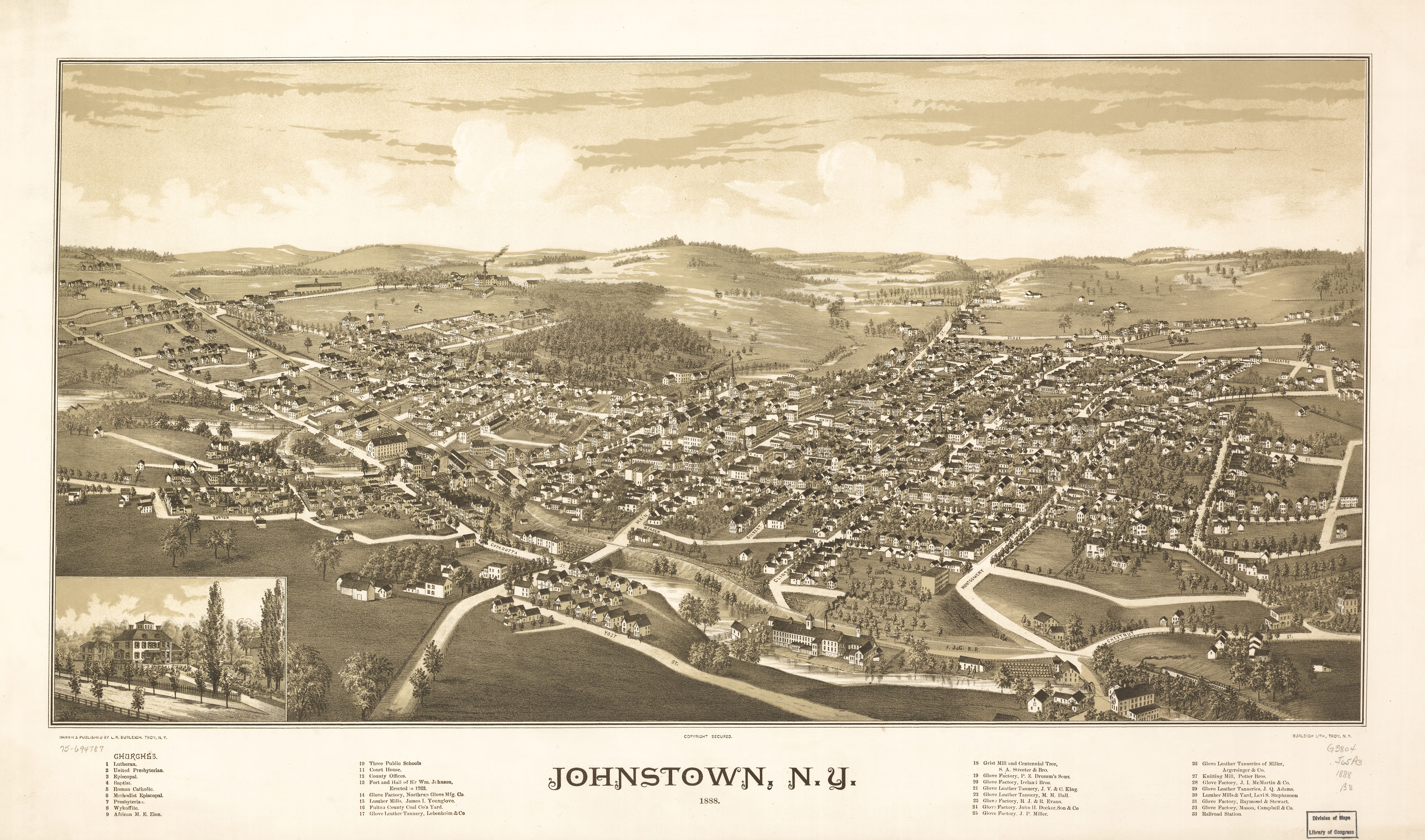|
Abraham Van Vechten
Abraham Van Vechten (December 5, 1762 – January 6, 1837) was an American lawyer and a Federalist politician who served twice as New York State Attorney General. Early life Abraham Van Vechten was born on December 5, 1762, in Catskill, Albany County (now Greene County), New York. He was the son of Dutch Americans Teunis Van Vechten (1707–1785) and Judikje "Judith" Ten Broeck (1721–1783). His brothers were Samuel Ten Broeck Van Vechten (1742–1813) and Teunis Van Vechten (1749–1817), who became a prominent merchant in Albany and held the office of commissary on the staff of Governor Morgan Lewis during the revolution. Their maternal grandfather was Jacob Ten Broeck (1688–1746), nephew of Dirck Wesselse Ten Broeck (1638–1717). Van Vechten was educated at Columbia College, studied law with John Lansing, Jr., and began practice in Johnstown, New York, but soon removed to Albany. Career In 1792, he was elected one of the first directors of the Bank of Albany. ... [...More Info...] [...Related Items...] OR: [Wikipedia] [Google] [Baidu] |
New York State Senate
The New York State Senate is the upper house of the New York State Legislature; the New York State Assembly is its lower house. Its members are elected to two-year terms; there are no term limits. There are 63 seats in the Senate. Partisan composition The New York State Senate was dominated by the Republican Party for much of the 20th century. Between World War II and the turn of the 21st century, the Democratic Party only controlled the upper house for one year. The Democrats took control of the Senate following the 1964 elections; however, the Republicans quickly regained a Senate majority in special elections later that year. By 2018, the State Senate was the last Republican-controlled body in New York government. In the 2018 elections, Democrats gained eight Senate seats, taking control of the chamber from the Republicans. In the 2020 elections, Democrats won a total of 43 seats, while Republicans won 20; the election results gave Senate Democrats a veto-proof two-thirds ... [...More Info...] [...Related Items...] OR: [Wikipedia] [Google] [Baidu] |
Vechten
Fectio, known as ''Vechten'' in Old Dutch, was a Roman ''castellum'' in the province Germania Inferior established in the year 4 or 5 AD. It was located at the place where the river Vecht (''Fectio'') branched off from the Rhine, leading to Lake Flevo, which was later to become the Zuiderzee. This was near the modern hamlet of Vechten in the municipality Bunnik, Utrecht, Netherlands. History Imperial Roman coinage teaches us that the castellum was built by order of Tiberius, then engaged in his campaign of 4–5 AD. It was probably used as a starting point for cross-border punitive raids. In 40 AD the emperor Caligula visited Fectio during the trip to Lugdunum Batavorum, the ancient Brittenburg. In its vineyards, the remains of an ancient postage stamp were discovered during the excavations of 1995. Under the emperor Claudius, Fectio became part of the Rhine limes. Then around 70 AD, at the time of the Batava revolt, the castellum was completely burned. It was later rebuilt by ... [...More Info...] [...Related Items...] OR: [Wikipedia] [Google] [Baidu] |
John Adams
John Adams (October 30, 1735 – July 4, 1826) was an American statesman, attorney, diplomat, writer, and Founding Fathers of the United States, Founding Father who served as the second president of the United States from 1797 to 1801. Before Presidency of John Adams, his presidency, he was a leader of the American Revolution that achieved independence from Kingdom of Great Britain, Great Britain, and during the war served as a diplomat in Europe. He was twice elected vice president of the United States, vice president, serving from 1789 to 1797 in a prestigious role with little power. Adams was a dedicated diarist and regularly corresponded with many important contemporaries, including his wife and adviser Abigail Adams as well as his friend and rival Thomas Jefferson. A lawyer and political activist prior to the Revolution, Adams was devoted to the right to counsel and presumption of innocence. He defied anti-British sentiment and successfully defended British soldiers agai ... [...More Info...] [...Related Items...] OR: [Wikipedia] [Google] [Baidu] |
1796 United States Presidential Election
The 1796 United States presidential election was the third quadrennial presidential election. It was held from Friday, November 4 to Wednesday, December 7, 1796. It was the first contested American presidential election, the first presidential election in which political parties played a dominant role, and the only presidential election in which a president and vice president were elected from opposing tickets. Incumbent Vice President John Adams of the Federalist Party defeated former Secretary of State Thomas Jefferson of the Democratic-Republican Party. With incumbent President George Washington having refused a third term in office, the 1796 election became the first U.S. presidential election in which political parties competed for the presidency. The Federalists coalesced behind Adams and the Democratic-Republicans supported Jefferson, but each party ran multiple candidates. Under the electoral rules in place prior to the Twelfth Amendment, the members of the Electoral Col ... [...More Info...] [...Related Items...] OR: [Wikipedia] [Google] [Baidu] |
Presidential Elector
The United States Electoral College is the group of presidential electors required by the Constitution to form every four years for the sole purpose of appointing the president and vice president. Each state and the District of Columbia appoints electors pursuant to the methods described by its legislature, equal in number to its congressional delegation (representatives and senators). Federal office holders, including senators and representatives, cannot be electors. Of the current 538 electors, an absolute majority of 270 or more ''electoral votes'' is required to elect the president and vice president. If no candidate achieves an absolute majority there, a contingent election is held by the United States House of Representatives to elect the president, and by the United States Senate to elect the vice president. The states and the District of Columbia hold a statewide or districtwide popular vote on Election Day in November to choose electors based upon how they have pled ... [...More Info...] [...Related Items...] OR: [Wikipedia] [Google] [Baidu] |
Federalist Party
The Federalist Party was a Conservatism in the United States, conservative political party which was the first political party in the United States. As such, under Alexander Hamilton, it dominated the national government from 1789 to 1801. Defeated by the Jeffersonian Republicans in 1800, it became a minority party while keeping its stronghold in New England and made a brief resurgence by opposing the War of 1812. It then collapsed with its last presidential candidate in 1816. Remnants lasted for a few years afterwards. The party appealed to businesses and to conservatives who favored banks, national over state government, manufacturing, an army and navy, and in world affairs preferred Kingdom of Great Britain, Great Britain and strongly opposed the French Revolution. The party favored centralization, Early federalism in the United States, federalism, Modernization theory, modernization, Industrialization in the United States, industrialization and Protectionism in the United S ... [...More Info...] [...Related Items...] OR: [Wikipedia] [Google] [Baidu] |
Montgomery County, New York
Montgomery County is a county in the U.S. state of New York. As of the 2020 census, the population was 49,532. The county seat is Fonda. The county was named in honor of Richard Montgomery, an American Revolutionary War general killed in 1775 at the Battle of Quebec. Historically occupied by the Mohawk people, one of the original Five Nations of the Iroquois Confederacy, the county was created in 1772 during the period of British colonial rule as Tryon County. In 1784, after the Americans gained independence in the War, it was renamed Montgomery County for one of the heroes. Montgomery County comprises the Amsterdam, NY Micropolitan Statistical Area. The county borders the north and south banks of the Mohawk River. History This area was occupied by the Mohawk for hundreds of years prior to European colonization. Many warriors allied with the British during the war. When the British lost, they ceded all the Iroquois territory of the Six Nations (the Tuscarora had join ... [...More Info...] [...Related Items...] OR: [Wikipedia] [Google] [Baidu] |
Schoharie County, New York
Schoharie County ( ) is a county in the U.S. state of New York. As of the 2020 census, the population was 29,714, making it the state's fifth-least populous county. The county seat is Schoharie. "Schoharie" comes from a Mohawk word meaning "floating driftwood." Schoharie County is part of the Albany-Schenectady-Troy, NY Metropolitan Statistical Area. History The large territory of the county (much of upstate and western New York) was long occupied by the Mohawk Nation and, to the west, the other four tribes of the Haudenosaunee Confederacy (increased to six with the migration of the Tuscarora from the South to New York in 1722). After European colonization of the Northeast started, the Mohawk had a lucrative fur trade with the French coming down from Canada, as well as the early Dutch colonists, and later British and German colonists. Some Palatine Germans, who worked in camps on the Hudson to pay off their passage in 1710, later settled in this county in the 1720s and 30 ... [...More Info...] [...Related Items...] OR: [Wikipedia] [Google] [Baidu] |
Saratoga County, New York
Saratoga County is a county in the U.S. state of New York, and is the fastest-growing county in Upstate New York. As of the 2020 U.S. census, the county's population was enumerated at 235,509, representing a 7.2% increase from the 2010 population of 219,607, representing one of the fastest growth rates in the northeastern United States. The county seat is Ballston Spa. Saratoga County is included in the Capital District, encompassing the Albany-Schenectady-Troy, New York Metropolitan Statistical Area. Saratoga County's name was derived from the Iroquois word ''sah-rah-ka'' or ''sarach-togue'', meaning "the hill beside the river", referring to the Hudson River bordering the county on its eastern flank and the Mohawk River delineating its southern border. Saratoga County, bisected by the toll-free, six-lane Adirondack Northway, serves as an outdoor recreational haven and as the gateway to the Adirondack Mountains and State Park for the populations of the Albany and New York Ci ... [...More Info...] [...Related Items...] OR: [Wikipedia] [Google] [Baidu] |
Johnstown (city), New York
Johnstown is a city in and the county seat of Fulton County in the U.S. state of New York. The city was named after its founder, Sir William Johnson, Superintendent of Indian Affairs in the Province of New York and a major general during the Seven Years' War in North America. It is located approximately northwest of Albany, about one-third of the way between Albany and the Finger Lakes region to the west, in the Mohawk Valley region, within the foothills of the Adirondack Mountains. The city of Johnstown is mostly surrounded by the town of Johnstown, of which it was once a part when it was a village. Adjacent to Johnstown is the City of Gloversville. The two cities are together known as the "Glove Cities" due to their history of manufacturing gloves and other leather apparel. Gloversville and Johnstown together constituted the center of the American glove industry for 90 years until competition from other countries drove most of the manufacturers out of business. As of t ... [...More Info...] [...Related Items...] OR: [Wikipedia] [Google] [Baidu] |
John Lansing, Jr
John is a common English name and surname: * John (given name) * John (surname) John may also refer to: New Testament Works * Gospel of John, a title often shortened to John * First Epistle of John, often shortened to 1 John * Second Epistle of John, often shortened to 2 John * Third Epistle of John, often shortened to 3 John People * John the Baptist (died c. AD 30), regarded as a prophet and the forerunner of Jesus Christ * John the Apostle (lived c. AD 30), one of the twelve apostles of Jesus * John the Evangelist, assigned author of the Fourth Gospel, once identified with the Apostle * John of Patmos, also known as John the Divine or John the Revelator, the author of the Book of Revelation, once identified with the Apostle * John the Presbyter, a figure either identified with or distinguished from the Apostle, the Evangelist and John of Patmos Other people with the given name Religious figures * John, father of Andrew the Apostle and Saint Peter * Pope J ... [...More Info...] [...Related Items...] OR: [Wikipedia] [Google] [Baidu] |
Dirck Wesselse Ten Broeck
Dirck Wesselse Ten Broeck (December 18, 1638 – November 24, 1717), also known as Dirck Wessels, was a prominent early settler of Albany, New York. He is known as "the progenitor of the Albany family of Ten Broecks." Early life Dirck Ten Broeck was born on December 18, 1638, the second of five children of Wessel Ten Broeck, who worked for the West India Company. Career In 1663, he is listed as "a free merchant in Albany," and purchased a house and lot on the corner of State and James Streets. In 1676 Governor Thomas Dongan appointed him Magistrate Commissary, and later Envoy to Canada. In 1686 he was a signatory of the "Charter of Beverwijck." After the first election under the charter he was appointed Recorder, in which office he served for ten years. In 1684, he was one of the purchasers of the 150,000-acre Saratoga Patent together with Cornelis Van Dyck, Jan Jansen Bleecker, Pieter Schuyler, Johannes Wendel, David Schuyler, and Robert Livingston the Elder. He was also one ... [...More Info...] [...Related Items...] OR: [Wikipedia] [Google] [Baidu] |







